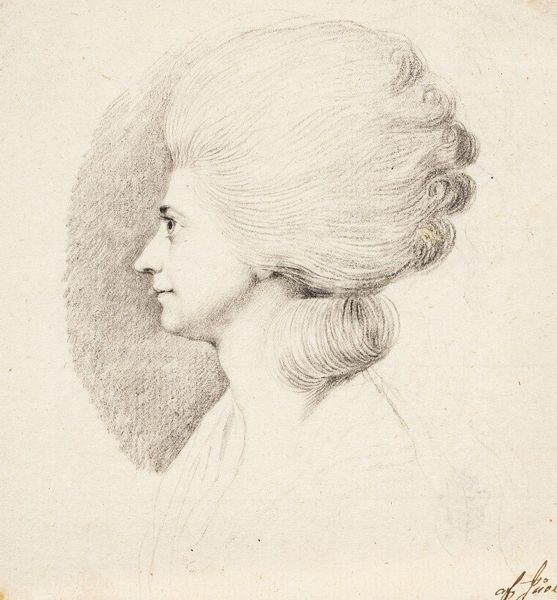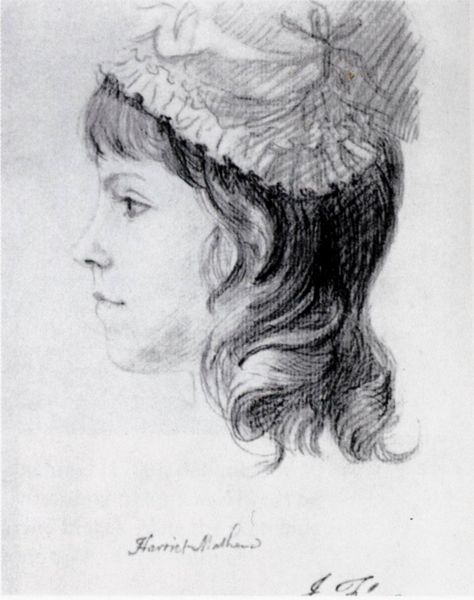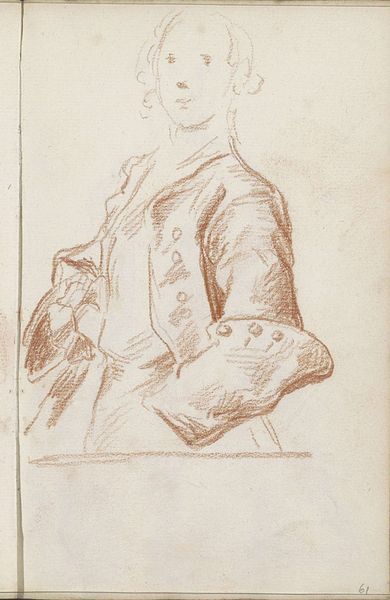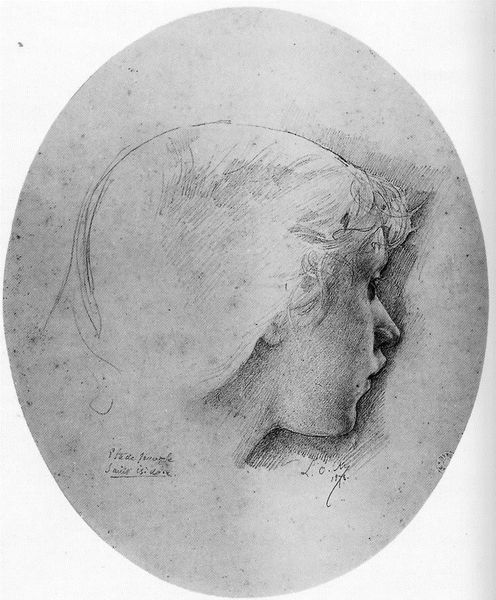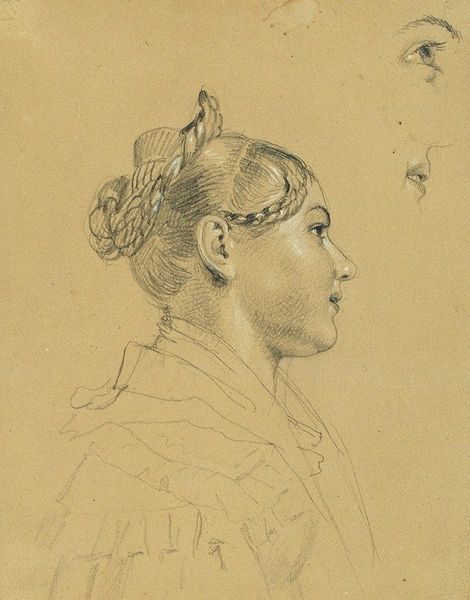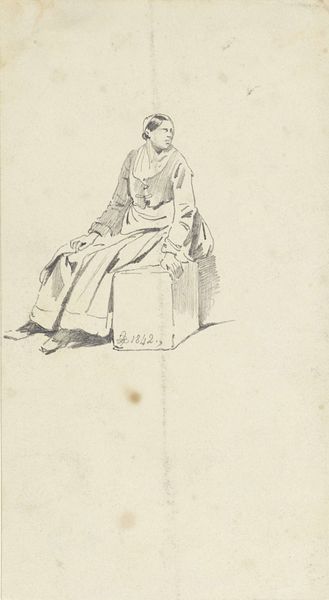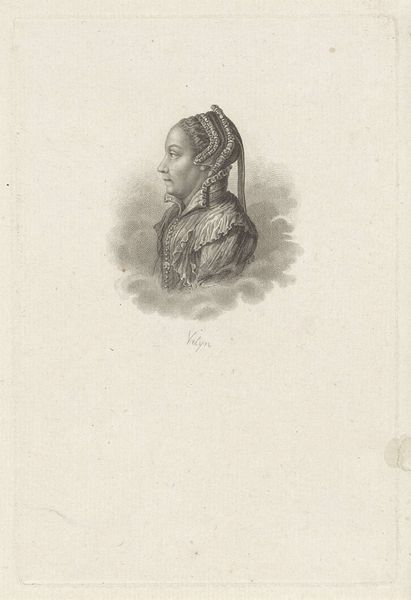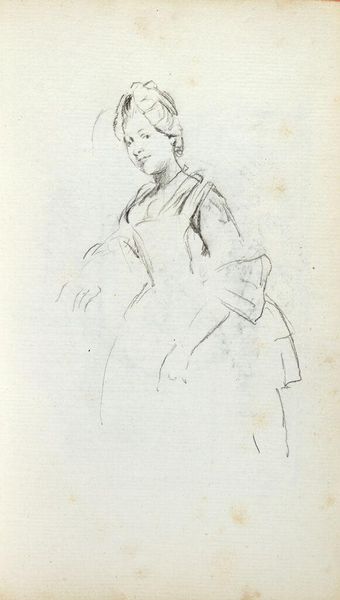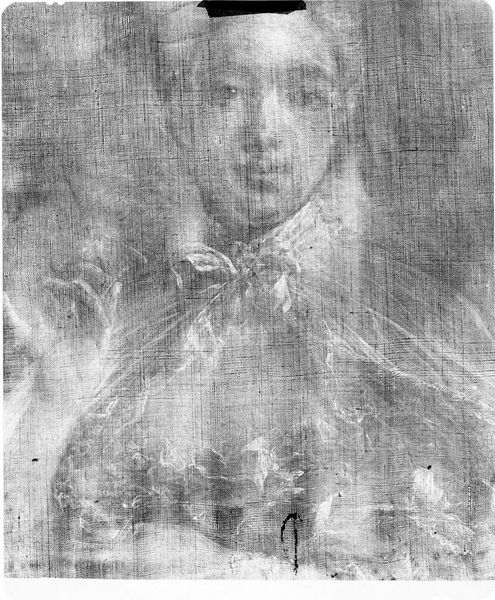
drawing, graphite
#
portrait
#
drawing
#
romanticism
#
graphite
Copyright: Public domain
Curator: Look at this tender portrait drawing in graphite, identified as Luise Sponholz. The inscription dates it to May 11, 1806. The artist is none other than Caspar David Friedrich. Editor: Oh, there’s a starkness to this piece, an honesty. Friedrich usually paints vast landscapes, but here the intimacy, the quiet…it’s compelling. Almost feels like peeking into someone's secret thoughts. Curator: It certainly offers an unvarnished glimpse into the Romantic era’s interest in feeling. Observe the profile view – traditionally associated with formal portraiture but rendered here with such subtle, almost hesitant lines. Is she looking to the future or contemplating the past? Editor: Maybe she's tired. I see a certain weariness in those simple lines around her eye, like she's seen more than she lets on. Or, and this might sound weird, like she is impatiently waiting. Curator: The way the garment is depicted – the loose, almost scratchy strokes. Does it communicate her position within society, or even a desire for individuality? Or is there, in the repetition of the marks, some symbol or meaning, a shadow from his usual imagery cast upon her shoulder? Editor: Well, her hair is a bit tousled. The simple style contrasts so sharply with those stiff, proper portraits you always see of ladies from that era. I think it reflects some desire to be herself. Almost looks defiant if you ask me. Curator: The gaze directs our understanding of the face and, indeed, her posture directs us from above down her body, in what seems almost a protective wrapping around her torso. This directs attention from one of the Romantic themes that preoccupied Friedrich throughout his career – death and life's mysteries. Editor: True. The very spareness of it leaves so much room to fill in the blanks. And in a way, that quietness magnifies the emotion, creates this oddly powerful connection across time. Like we, the viewers, now also bear witness to a shared sense of something undefinable. Curator: It’s a privilege to consider Friedrich’s Romantic interpretation of portraiture, this connection. He allows a moment of time to become intensely internalized and timelessly available. Editor: I'll never see another of his sweeping landscapes the same way again, that’s for sure. Now I'll be picturing everyone hidden within them, each facing the same winds we face, together and completely alone.
Comments
No comments
Be the first to comment and join the conversation on the ultimate creative platform.


